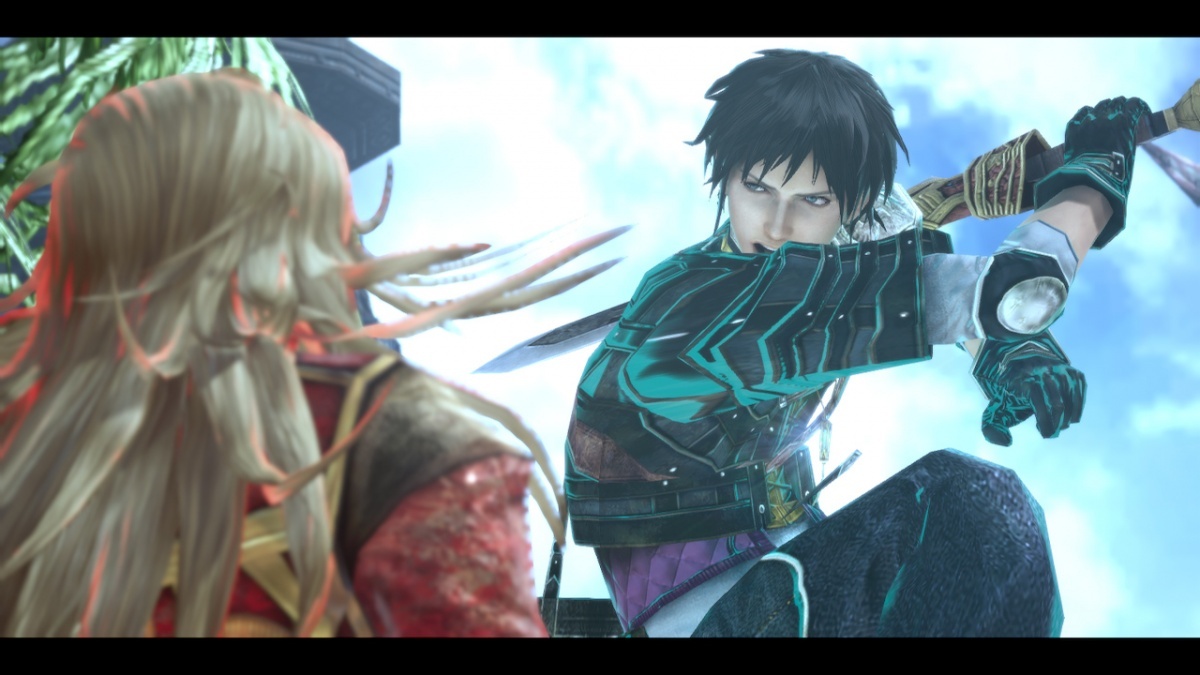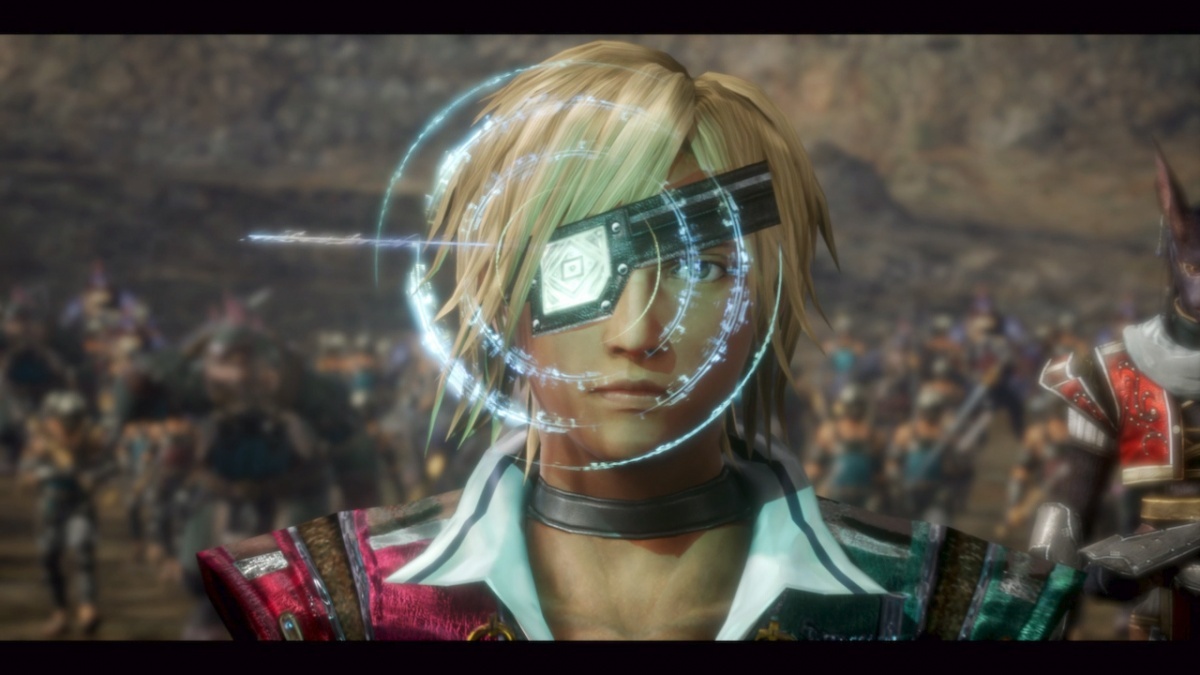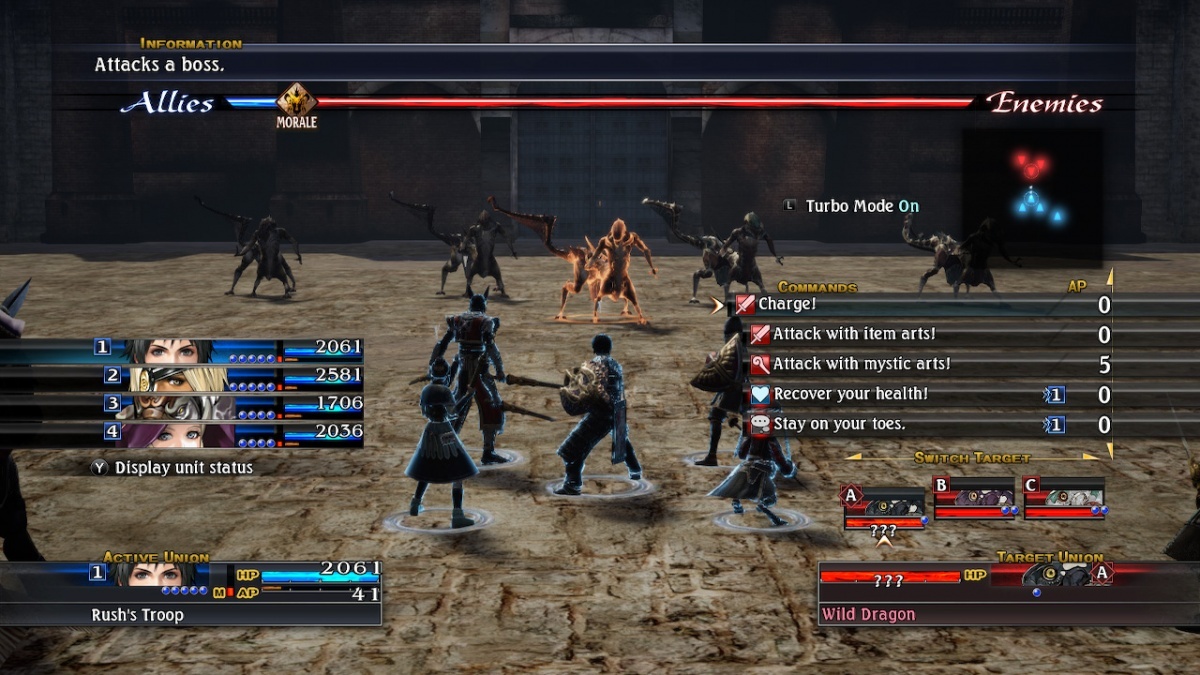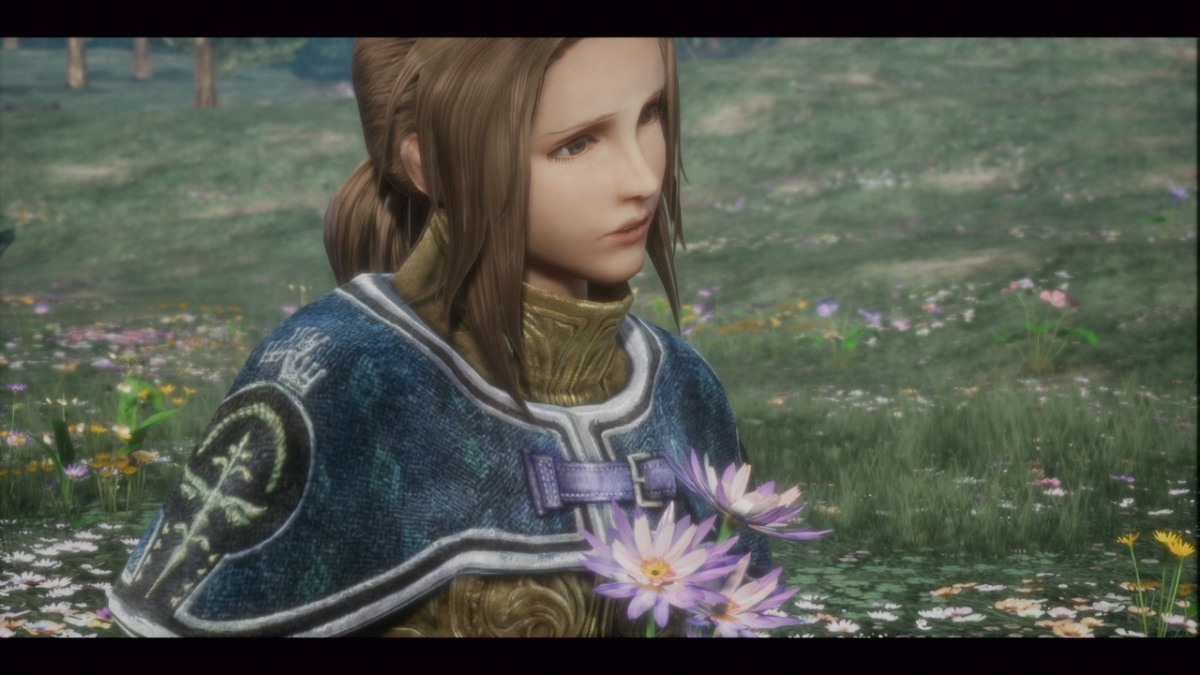The Last Remnant Remastered (Nintendo Switch) Review
By Rudy Lavaux  17.08.2019
17.08.2019

In retrospect, the JRPG giant Square Enix took a long time to find it footing in the previous generation of consoles. The output of the company that was born of the merger of the former two greatest rivals in the genre back in 2003 was extremely high, and quality games kept pouring out of the developer, especially on the PlayStation 2. At the turn of the generation, however, things slowed down considerably. The Xbox 360 came out in 2006, and the PlayStation 3 about a year later in 2007, and yet no HD JRPG would come out of Square Enix before September 2008, with the release of the Xbox 360 exclusive Infinite Undiscovery by Tri-Ace. The latter only got mixed reviews, and the next one, released only a month later, would be The Last Remnant, also an exclusive on Microsoft's console. That one, too, did not fully capture the favour of the crowds. It would only be with the eventual release, at the start of 2009, of Star Ocean: The Last Hope, initially also an Xbox 360 exclusive, that the generation of HD JRPGs on consoles felt like it had truly begun. Fast forward to January 2019, and Square Enix releases a remastered version of The Last Remnant on PS4 - and it's this same remaster that now graces the Switch, after its surprise reveal during their E3 2019 conference.
The Last Remnant follows protagonist Rush Sykes, as he sets out to find his sister, but gets involved in a great battle as he does so. He then meets the Marquis of Athlum, David, who takes a liking to him, and wants to help him find his parents whom he and his sister Irina were supposed to go live with in Elysion, where they work as researchers. Indeed, the Sykes family is famous in the field of research on Remnants; relics of a bygone era, and the fruit of a high level of technology, now forgotten, but yet studied so as to recapture its full potential.
However it turns out that Irina was abducted by a group of people willing to conduct forbidden experiments on said Remnants because she possesses powers allowing her to uniquely interact with them. Those people, however, are in cahoots with very influential people, the likes of whom David also has to answer to as their vassal. The overall story has strong hints of plotting and political devices, a bit like something out of a Fire Emblem game, but also with lots of magic/science stuff thrown in for good measure with the whole Remnant affair going on. It is really slow to get going, but when it does, it is interesting enough and there's enough mystery to keep players invested... assuming that they can stick with all the different mechanics that make up the interactive part of this story-driven piece of entertainment.
When it first released, The Last Remnant already gave trouble with its mechanics, and everything is still very much still in place here. For example, although this gives little to no explanation at all for that fact, this JRPG has no traditional levelling system. Instead, it goes the route of the Final Fantasy II/Sa.Ga system where individual character grow in proficiency in certain domains based on their actions in battle. The more a character uses combat arts, the more its strength will grow. The more they take damage, the more their HP grows. The more they use recovery items, the better they become at it, and so on. Likewise, using the same arts repeatedly unlocks more advanced versions thereof. There is a catch to it all however...

Players do not select manually what their units will do. Rather, playable characters in the party are arranged into 'Unions;' groups of units that are issued general orders from a limited list that changes based on the situation of the battle. Those orders cost AP to issue, and those AP are taken out of that union's gauge, which itself corresponds to the total of AP of every character in that union. A command to use combat arts for example, may make Rush use Knee Splitter, another guest character would use a regular attack while a third could for example another combat art of its own. However those are selections offered by the game whenever it feels like it and there are situations where it is unclear why this isn't giving an option to use mystic arts.
Then, beyond this sense that some things are beyond control in battle, there is a complex sense of strategy involved that feels equally as convoluted, where enemy and playable unions will clash into deadlocks, or get flanked, or surrounded, and while brief explanations for each situation will be given, there are certain battles required to advance the story that may well feel impossible at first and induce many repeated deaths without being sure what was done wrong. Early on, Rush will be joined by David's guest unions, on which the player has no control whatsoever, but Rush is on his own and, if he gets deadlocked at all by another enemy union in that battle, he's dead and a Game Over ensues.
The only solution seemed to be to go and hire guest characters to add to Rush's union, so as to make it more resistant, but any indication of this is never made. Then, even after doing so, that union of three will still be too weak, and since David's unions do whatever they like, little in the way of strategy changes seemed to make any difference on the outcome. The only thing that works is grinding for a few hours, until they were strong enough to not die while David was off doing whatever he wanted. This sense of being lost so early on could easily put potential players off from experiencing the rest of the story, and, unfortunately, this is something that has not been addressed in the remaster.

Short of being able to fully grasp all the ins and outs of the battle system then, or being able to control it perfectly, it is indeed a rather grindy affair overall. Sometimes the story as it advances likes to throw sudden spikes in difficulty that hit like a brick wall and tell the player "go back and grind some more," right when things got especially interesting. That takes away from the good flow of the narrative. Originally, battles felt very slow in the original. This is why this remaster has one quality of life improvement added in: Turbo Mode. This lets battles play out a lot faster which does make grinding against inferior enemy unions much more of a breeze than otherwise. Turbo Mode does make the QTEs in battle harder to react to, however, so there is an option for the game to handle them automatically. If this is activated, the CPU itself will randomly get it right. This should be reserved for grinding sessions so as to be able to watch a film on TV, or listen to music.
As JRPGs go then, this one proves hard to get into, despite having definitely some of the makings of a competent adventure that any JRPG fan would want to sit through. It has a good quest management system, for example, and a deep item crafting and customising system. But overall it still feels also a bit stuck in the PS2 era in parts of its presentation. For example, it is not an open-world RPG, and areas barely seem any larger to explore than anything the PS2 had to offer, other than being in HD, and looking nicer as a result, even more so in its remastered form than they did back on the last generation system it started life on.
Moving from one area to the next is done via an overhead 2D map with little detail on it, like a much lower budget game than what it really was when it first came out. The Last Remnant, in its original XBox 360 version, ran on Unreal Engine 3. This was later ported to the PC with a few gameplay changes, but that still used the same engine. When it was brought over to PS4 however, it was ported to Unreal Engine 4, which the Switch supports already as opposed to Unreal Engine 3. On Xbox 360, this had many technical issues like bad frame rate and texture pop-in.

Whether that was the engine's fault or not, compared to the original, the resolution here is higher and texture work seems to aim for a higher resolution output as well, at least on character models. No texture pop-in issues are to be reported at all however, though ground textures in wide open areas do still appear rather flat and blurry. The art itself of the game is good. Character design in and of itself is well above average, and the different locales, if they do lack perhaps in terms of actual level of detail, are nice and clean looking. However, character models do look a bit weird in movement. Seeing them walking around or turning to one another feels very much like something out of the PS2 era. Facial expressions and lip movements, in particular, look a bit weird to the point of being distracting.
It is not a bad looking game but it moves weird overall. Furthermore, The Last Remnant Remastered uses an uncapped frame rate on Switch. The lowest it ever dips is in the high 20s while it also never really goes much higher than perhaps 35fps. It is therefore weird that a frame rate cap of 30fps was not implemented, with the game instead being thrown out onto the eShop as is. In all fairness, it never feels too jittery either, since the frame rate remains overall fairly consistent otherwise, but it shouldn't have been too hard to implement something to iron things out further. This could still be addressed via an update of course but at time of writing, a couple weeks after release, there are no signs of anything forthcoming.
The acceptable presentation is leveraged by a good soundtrack, and sound design overall feels top quality. The same cannot be said however of the English voice cast. The acting ranges from just average to downright laughably distracting. This is a shame since, as mentioned above, once the story starts getting really interesting and has the potential to really grip the player and motivates him or her to perseverate with the convoluted and hard to approach battle mechanics and character growth system... the voice acting is there to distract from the plot a bit. Sadly, unlike other recent Square Enix outings on the same platform, like Final fantasy XII: The Zodiac Age, for example, there is no option to switch over to Japanese voices.

Cubed3 Rating
Good
In its first incarnations, The Last Remnant was already a JRPG with a plot that takes some time to hook the player in, and a dynamic battle system marred by obscure mechanics, and a completely concealed stat growth logic. This remaster brings a few quality of life improvements that make the experience a bit less cumbersome to sit through, and the visual uplift is definitely welcome. However the latter can't help the mediocre English voice acting, and the fact that its character animations have aged terribly, despite the character art itself being good, coupled with the scenery itself having a level of detail that belongs in the PS2 era. That combination of factors means it will be very hard to get into for most newcomers. Those that stick with it long enough, and put in the unusually big effort required to truly grasp all its ins and outs, will find a good JRPG story a few hours in, just one with hit and miss production values.

![]() 6/10
6/10
![]() 0
(0 Votes)
0
(0 Votes)
 Out now
Out now  Out now
Out now  Out now
Out now  Out now
Out now Comments
Comments are currently disabled

 Sign In
Sign In Game Details
Game Details Subscribe to this topic
Subscribe to this topic Features
Features





 Top
Top

